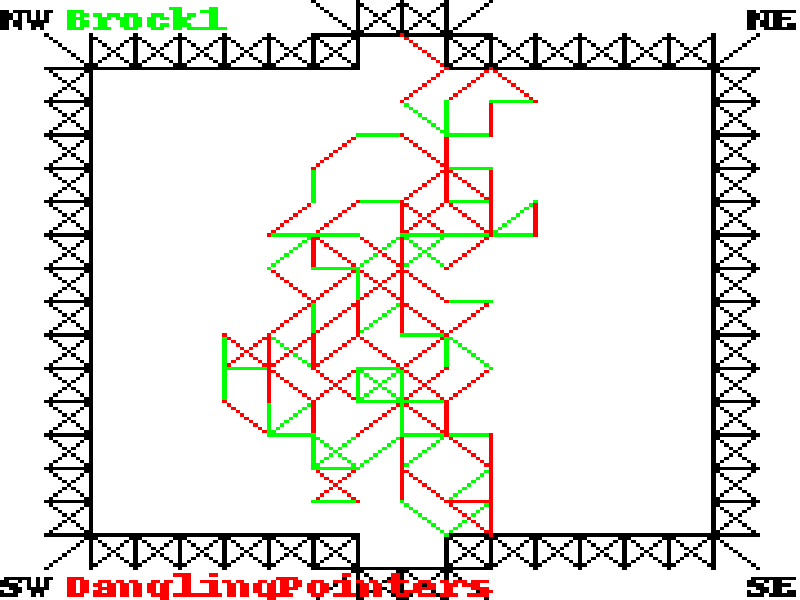Paper Hockey AI

This year at CS Games the AI challenge entailed creating an agent for a game called “paper hockey”. Basically, each team takes turns moving the puck in one of eight directions (4 cardinal directions plus diagonals), and the first team to score the puck in the opposing team’s net wins. Once an edge has been moved over, the ice becomes crushed and it cannot be re-travelled. Additionally, moving over a position that has already been visited via a different edge awards the player with a bounce (i.e. an extra move). A team can also win by check-mating their opponent, this is accomplished by moving into a location surrounded by crushed ice, thus no valid moves can be made. The official README contains more information.
The Winning Agent
My team (consisting of two others and myself) developed the winning agent. The GIF above depicts a particularly involved game of our bot, the DanglingPointers, playing against Brock Universities bot. The source code for our agent is available on GitHub, and the rest of this post will discuss our development/thought process throughout the challenge.
Board Representation
The game board can easily be interpreted as an 8-regular graph, where each section of ice represents a node and the movements represent edges. Since time was limited we decided to forgo keeping track of the entire state of the board within our agent, and went with a much simpler approach.
First Iteration
In the interest of time, we decided to start out with a simple one state look ahead heuristic. Our player would move the puck to the section of ice which was closest to the opponents goal. Since the game board was a grid, Manhattan distance seemed like a sensible distance function, so we went with that.
A Better Distance Function
We quickly realized that Manhattan distance wasn’t a good metric as it only considers cardinal movements, and our agent was allowed to move diagonally. We updated the heuristic to consider Euclidean distance, and observed a noticeable change in performance. [In talking to other teams I discovered that we were not the only ones to make this mistake, many others incorrectly used Manhattan distance as a heuristic and their bot suffered because of it.]
Bounce Consideration
An attempt was made at considering bounces when selecting the next state. Instead of only considering the immediate distance to the goal, the new algorithm would consider how close we could get to the opponents goal accounting for how far the puck could potentially bounce. We ultimately ended up scraping this as it had the unfortunate side affect of heavily saturating the game board, resulting in frequent self check mates.
Post Shots
Moving back to the original Euclidean distance single state look ahead, we realized that shooting the puck off of the walls provided a bounce. Since the posts counted as walls, one could guarantee victory from two sections away by banking the shot off the post and then into the goal. We thus modified our heuristic to always take a post shot if one was available.
Occam’s Razor
In the end Occam’s Razor prevailed and a greedy one state look ahead agent out-performed its more complicated counter parts.

[Left to right] Patrick (team mate), Myself, Jurko (team mate), Mark (contest organizer)